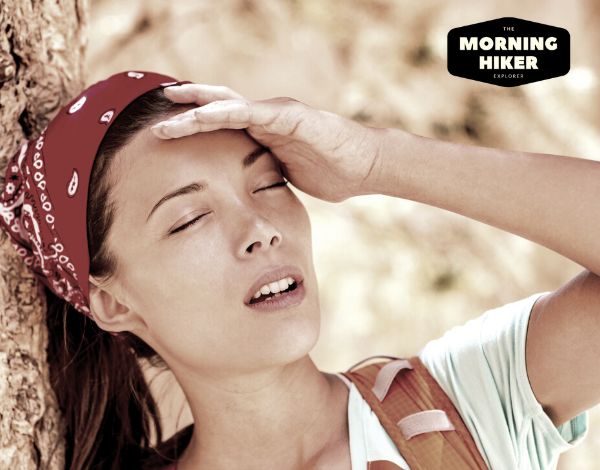Does hiking build muscle? You bet. Discover how hiking can help sculpt your legs naturally. Learn about the science behind it, trails to hike, and tips to maximize its benefits today.
This post contains some affiliate links to products that I use and love. If you click through and make a purchase, I’ll earn a commission, at no additional cost to you. Read my full disclosure here.
Discover how hiking can naturally sculpt your legs and improve your fitness.
Have you been looking for a fun and adventurous way to build your leg muscles? Look no further than hiking! Not only is it a great way to explore the beautiful outdoors, but it can also help sculpt your legs into shape.
In fact, hiking can be just as effective as weightlifting when it comes to tearing and repairing muscle fibers, resulting in muscle growth.
But that’s not all – hiking engages multiple muscle groups at once, making it an efficient and effective workout. You’ll work your quads, hamstrings, calves, glutes, and even your core as you navigate rocky terrain or steep inclines.
Plus, hiking improves balance and stability, which translates to better performance in other areas of fitness such as running or weightlifting.
So, whether you’re a seasoned hiker or just starting out on the trails, read on to learn how the great outdoors can be your all-natural leg builder.
In This Article
The Benefits of Hiking for Your Legs
With hiking, your lower body can reap the rewards of a challenging workout that takes you on a scenic journey through nature’s playground. Building endurance while enjoying the great outdoors is an incredible way to get fit and healthy.
Hiking trails vary in difficulty, so it’s important to choose one that matches your fitness level. Proper footwear is crucial for preventing injuries and providing support, especially on uneven terrain. Scenic hikes with breathtaking views can inspire you to push yourself further and go the extra mile.
Hiking with a group can also motivate you and add a social aspect to your workout routine. Engaging multiple muscle groups while trekking up hills or climbing over rocks is an excellent way to sculpt your legs.
Next, let’s explore how different muscles are worked during hiking workouts!
Engaging Multiple Muscle Groups
You can engage multiple muscle groups and turn your hike into a full-body workout by using trekking poles, making the most out of your time in nature. Not only do they provide support for your knees and ankles, but they also target your upper body muscles such as biceps, triceps, shoulders, and back.
By incorporating trekking poles into your hiking routine, you’re boosting endurance and enhancing cardiovascular benefits while strengthening various muscle groups. In addition to trekking poles, there are many other ways to intensify your hike and sculpt those legs.
Trail running is a great way to increase intensity and challenge yourself on different terrain. Elevation training involves hiking uphill or upstairs repeatedly to improve stamina and build leg muscles. Hiking with weights such as ankle weights or a weighted backpack can also add resistance training to your hike.
Take advantage of scenic hiking routes that offer varying terrain for an added challenge. With these methods combined, you’ll experience a full-body workout while enjoying the beauty of nature around you. As you continue improving balance and stability on the trail…
Improving Balance and Stability
Enhancing your balance and stability on the trail is like finding your sea legs on a boat—it takes practice and focus to navigate the terrain with ease. Improving posture is key to achieving better balance and stability.
When you hike with good posture, you engage your core muscles and maintain proper alignment of your spine. This not only helps prevent injuries but also improves your overall hiking experience.
Core strengthening exercises are crucial for hikers looking to improve their balance and stability on the trail. Yoga for hikers is an excellent way to strengthen your core muscles while also improving flexibility and reducing stress levels. Additionally, incorporating balance exercises such as standing on one foot or walking heel-to-toe can help you develop better control over your body movements.
Trail running is another great activity that can help improve balance and stability by forcing you to adjust to uneven terrain at a faster pace. By focusing on improving these skills, you’ll be able to tackle more challenging hikes with confidence and ease.
As you work towards building stronger legs through hiking, it’s important to make the most of every workout. In the next section, we’ll cover tips for maximizing your hiking workout so that you can achieve better results in less time without sacrificing fun!
Tips for Making the Most of Your Hiking Workout
Get ready to take your hiking game to the next level with these tips for maximizing your workout – you won’t believe how much stronger and more confident you’ll feel on the trails!
Start by fueling up with proper hiking nutrition, such as high-quality protein and complex carbohydrates, before hitting the trail. Don’t forget to bring essential gear like a hydration pack, sturdy hiking shoes, and trekking poles for added stability. Be sure to also prioritize trail safety by checking weather conditions beforehand, letting someone know your planned route, and carrying a first aid kit.
Choosing the right trail is also key for an effective hike. Consider factors such as distance, elevation gain, terrain difficulty, and scenery when selecting a route. And don’t underestimate the mental benefits of spending time in nature – take breaks to appreciate the beauty around you and practice mindfulness techniques like deep breathing or meditation.
By following these tips, you can make each hike count towards achieving your fitness goals. Now let’s explore incorporating hiking into your fitness routine…
Incorporating Hiking into Your Fitness Routine
Incorporating hiking into your fitness routine can elevate your workouts and provide a refreshing change of scenery. To get started, it’s important to have proper footwear that provides support and traction on different terrains. Look for shoes with sturdy soles that can handle rocks, roots, and uneven surfaces.
Additionally, consider the trail you choose based on your fitness level and experience. Start with shorter hikes on well-marked trails before progressing to more challenging routes.
Hydration and nutrition are also crucial when hiking as they affect performance and recovery. Be sure to pack enough water and snacks to fuel your body throughout the hike. Opt for nutrient-dense foods like trail mix, protein bars, and fruits that give you sustained energy without weighing you down.
- NEW LOOK! The same great Sustain water bottle made with material derived from 50% plastic waste now has a new look. You may receive a bottle with or without the Sustain Logo on it, both are your favorite Sustain water bottles.
- Our new Nalgene Sustain product line is made from Tritan Renew, 50% certified recycled content further offsetting the use of fossil fuels and lowering greenhouse gas emissions.
- Magnetic Cap: Stows out of the way when drinking
- Color Match Tether
- 24-ounce insulated stainless-steel water bottle with a FreeSip spout and push-button lid with lock
- Patented FreeSip spout designed for either sipping upright through the built-in straw or tilting back to swig from the spout opening
- Paracord Handles & Strap:32 oz water bottles Equipped with high quality colorful nylon braided Paracord Handles, bid farewell to the uncomfortable grip feeling, make the lifting more relaxed! Insulated 32 oz water bottle also comes with a 70.86 inches retractable strap, which can be worn directly on the body to free your hands and allow you to ride, climb, hike, rock climb and surf freely.
- 2 LEAKPROOF LIDS: Insulated water bottle with straw is equipped with 2 lids-Straw Lid& Spout Lid, both of which are sealed and leak-proof,Straw lid is right for cold beverages. Spout Lid is suitable for room temperature or hot drinks, It has two-stage force design to ensure that the lid won’t fall off and knock your nose when you open it while drinking.
- LARGE OPENING FOR EASY CLEANING – CHERAINTI 2l hydration bladder has one of large opening, and the big opening makes for easy pouring of water. It is also fairly wide for a hand or bottle brush easily access to the interior water bladder for hiking backpack. The screw on cap goes on and off easily. For cold water, simply add ice cubes directly from a scoop or refrigerator ice dispenser. The smooth inner of water reservoir promotes health and is easy to clean.
- PREMIUM QUALITY – The whole hydration bladder is made of premium material. CHERAINTI water reservoir is taste free, SGS certified and food grade. This tested to comply with international safety standards. It won’t leave a bad taste in your drink. The water bladder 2l passed pneumatic pressure test, it is pressure-tolerant. Double sealing side technique has greatly improved durability hydration pack bladder.
After the hike, prioritize recovery by stretching or foam rolling sore muscles and replenishing them with high-quality protein sources like lean meats or plant-based options. Incorporating hiking into your fitness routine not only builds leg muscles but also improves overall health in an enjoyable way.
Frequently Asked Questions
What are some common mistakes to avoid when hiking for leg building?
Avoid common mistakes when hiking for leg building by paying attention to proper form, trail difficulty, footwear choice, hydration needs, and rest and recovery.
Did you know that improper form can lead to injuries and hinder muscle growth? It’s important to maintain a steady pace and use your entire foot to prevent overusing certain muscles.
Additionally, choosing a trail that is too easy or too difficult can also impact the effectiveness of your hike. Make sure to choose a trail with varying elevations and terrains for maximum muscle activation.
Proper footwear is crucial for preventing blisters and providing support on uneven terrain. Don’t forget to stay hydrated throughout your hike and take breaks as needed for rest and recovery.
Can hiking alone be enough to build significant muscle in the legs?
If you’re looking to build significant muscle in your legs, hiking alone may not be enough. While hiking offers numerous benefits such as improving cardiovascular health and muscle strength, the frequency and terrain of your hikes play a crucial role.
To see significant muscle growth in your legs, it is important to hike frequently on challenging terrain that targets the quadriceps, hamstrings, glutes, and calf muscles. Proper hiking equipment such as trekking poles can also turn your hike into a full-body workout.
In addition to exercise, nutrition is key for muscle growth. Adequate protein intake and calorie consumption are necessary for proper post-hike muscle recovery and growth.
How can hiking be incorporated into a weightlifting routine for optimal leg building?
To incorporate hiking into your weightlifting routine for optimal leg building, consider the trail terrain and backpack weight.
Hiking intervals with varying inclines and declines can target different leg muscles and challenge your body in new ways. Choose appropriate footwear that provides support and stability on uneven terrain.
Rest days are crucial for muscle recovery, so schedule your hikes accordingly. By adding hiking to your weightlifting routine, you can improve cardiovascular health and build leg muscles while enjoying the great outdoors.
What are some safety tips to keep in mind when hiking for leg building?
When it comes to hiking for leg building, safety should be your top priority. It’s important to have essential gear such as sturdy footwear, a backpack with enough water and snacks, and appropriate clothing depending on the weather conditions.
Trail safety includes staying on marked paths, being aware of wildlife in the area, and avoiding risky maneuvers such as climbing steep rocks or crossing deep streams. Trail etiquette involves respecting other hikers’ space, keeping noise levels down, and leaving no trace behind.
Emergency preparedness means carrying a first aid kit and knowing how to use it in case of injuries or accidents. By following these tips, you can enjoy the benefits of hiking while keeping yourself safe on the trails.
Are there any specific stretches or warm-up exercises that are recommended before a leg-building hike?
Before embarking on a leg-building hike, it’s important to properly prepare your body. Start with dynamic stretches and foam rolling to prevent injury. Additionally, activation exercises can be helpful in targeting specific muscles that will be used during the hike.
Proper footwear is crucial for both support and traction on various terrain types. Don’t forget to hydrate and fuel your body with nutritious snacks throughout the hike. Make sure to drink plenty of water before, during, and after the hike for sustained energy.
By taking these precautions, you’ll be able to enjoy the adventure of hiking while effectively building leg muscle.
What’s Next?
Congratulations! You’ve discovered the all-natural leg builder – hiking. By incorporating hiking into your fitness routine, you can build strong and toned legs while enjoying the beauty of nature.
Not only does hiking engage multiple muscle groups in your legs, but it also improves your balance and stability. As you hit the trails, remember to take advantage of the varying terrain and inclines to challenge your muscles even more. And don’t forget to stay hydrated and wear appropriate footwear for maximum comfort and safety.
So why not trade in those boring gym routines for an adventurous hike? You’ll not only be building muscle but also improving cardiovascular health and reducing stress levels.
So what are you waiting for? Grab a friend or go solo and explore the great outdoors while sculpting those legs.








We are participants in the Amazon Services LLC Associates Program, an affiliate advertising program designed to provide a means for sites to earn advertising fees by advertising and linking to Amazon.com